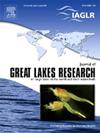Hydrologic connections in Apostle Islands coastal wetlands: Exploring dynamics and resilience to Lake Superior water level fluctuations
IF 2.5
3区 环境科学与生态学
Q3 ENVIRONMENTAL SCIENCES
引用次数: 0
Abstract
Coastal wetlands within Apostle Islands National Lakeshore (APIS) represent important reference ecosystems for Lake Superior given their relatively undegraded condition. However, this region lacks climate change-relevant nearshore bathymetric information for coastal wetlands, a gap our study helps fill. Since 2010, the Great Lakes, including Lake Superior, have experienced both extended low water levels and extreme highs. Such extremes are anticipated to increase in frequency and duration, but the exact outcomes are uncertain. Therefore, it is important to explore the resiliency of APIS wetlands against different water level scenarios. We studied seven wetlands with different geomorphic connections to Lake Superior (open, transient, or semi-permanent) and gathered water level and depth data. Using depth measurements, we created topo-bathymetric maps to investigate inundation patterns for various scenarios of Lake Superior water levels. Comparing wetland water levels to those of Lake Superior we found that water level patterns were unique per connection type, but that Lake Superior maintained baseline-water levels for all sites. Additionally, the wetlands we sampled demonstrated resiliency to substantial changes in water levels thanks to both bathymetry deeper than record low Lake Superior levels and sufficient undisturbed upslope habitats. However, the biotic communities within could shift in composition depending on future water level regimes. The increasing magnitude and frequency of Great Lakes water level fluctuations induced by climate change will influence all APIS coastal wetlands, regardless of connection type.
Apostle群岛沿海湿地的水文联系:探索苏必利尔湖水位波动的动态和恢复力
Apostle Islands国家湖岸(APIS)内的滨海湿地相对未退化,是苏必利尔湖重要的参考生态系统。然而,该地区缺乏与沿海湿地的气候变化相关的近岸水深信息,我们的研究有助于填补这一空白。自2010年以来,包括苏必利尔湖在内的五大湖经历了长时间的低水位和极高的水位。预计这种极端天气的频率和持续时间将增加,但确切的结果尚不确定。因此,探讨api湿地在不同水位情景下的恢复能力具有重要意义。我们研究了七个与苏必利尔湖有不同地貌联系的湿地(开放的、短暂的或半永久的),并收集了水位和深度数据。利用深度测量,我们创建了地形水深图,以调查苏必利尔湖水位的各种情景的淹没模式。将湿地水位与苏必利尔湖的水位进行比较,我们发现每个连接类型的水位模式都是独特的,但苏必利尔湖保持了所有站点的基线水位。此外,我们采样的湿地显示出对水位大幅变化的弹性,这要归功于比历史最低的苏必利尔湖水位更深的水深和充足的未受干扰的上坡栖息地。然而,内部的生物群落可能会根据未来的水位变化而改变组成。气候变化引起的五大湖水位波动幅度和频率的增加将影响所有api滨海湿地,无论连接类型如何。
本文章由计算机程序翻译,如有差异,请以英文原文为准。
求助全文
约1分钟内获得全文
求助全文
来源期刊

Journal of Great Lakes Research
生物-海洋与淡水生物学
CiteScore
5.10
自引率
13.60%
发文量
178
审稿时长
6 months
期刊介绍:
Published six times per year, the Journal of Great Lakes Research is multidisciplinary in its coverage, publishing manuscripts on a wide range of theoretical and applied topics in the natural science fields of biology, chemistry, physics, geology, as well as social sciences of the large lakes of the world and their watersheds. Large lakes generally are considered as those lakes which have a mean surface area of >500 km2 (see Herdendorf, C.E. 1982. Large lakes of the world. J. Great Lakes Res. 8:379-412, for examples), although smaller lakes may be considered, especially if they are very deep. We also welcome contributions on saline lakes and research on estuarine waters where the results have application to large lakes.
 求助内容:
求助内容: 应助结果提醒方式:
应助结果提醒方式:


